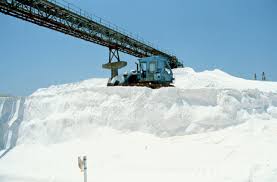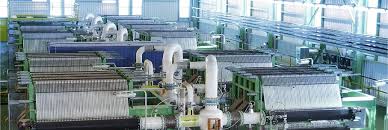


Sodium hydroxide (source Wikipedia), also known as lye and caustic soda (NaOH) , is a highly caustic base and alkali that decomposes proteins at ordinary ambient temperatures and may cause severe chemical burns.
Sodium hydroxide is used in many industries: in the manufacture of pulp and paper, textiles, drinking water, soaps and detergents, and as a drain cleaner.
Sodium hydroxide is industrially produced as a 50% solution by variations of the electrolytic chloralkali process. Chlorine gas is also produced in this process. Solid sodium hydroxide is obtained from this solution by the evaporation of water. Solid sodium hydroxide is most commonly sold as flakes, prills, and cast blocks.
Sodium hydroxide is a popular strong base used in industry. Around 56% of sodium hydroxide produced is used by industry, 25% of which is used in the paper industry. Sodium hydroxide is also used in the manufacture of sodium salts and detergents, pH regulation, and organic synthesis. It is used in the Bayer process of aluminium production.[15] In bulk, it is most often handled as an aqueous solution, since solutions are cheaper and easier to handle.
Sodium hydroxide is used in many scenarios where it is desirable to increase the alkalinity of a mixture, or to neutralize acids.
For example, in the petroleum industry, sodium hydroxide is used as an additive in drillring mud to increase alkalinity in bentonite mud systems, to increase the mud viscosity, and to neutralize any acid gas (such as hydrogen sulfide and carbon dioxide) which may be encountered in the geological formation as drilling progresses.
Potassium hydroxide is an inorganic compound with the formula KOH, and is commonly called caustic potash. Along with sodium hydroxide (NaOH), this colorless solid is a prototypical strong base. It has many industrial and niche applications, most of which exploit its caustic nature and its reactivity toward acids. KOH is noteworthy as the precursor to most soft and liquid soaps, as well as numerous potassium-containing chemicals.
KOH and NaOH can be used interchangeably for a number of applications, although in industry, NaOH is preferred because of its lower cost.
These two mediums are also use in chemical processes for cleaning equipment from fouling.
These two mediums are aggressive against phenolic resin which tend to be corroded especially over 20% concentration @ 100°C. Low quality graphite face low lifetime in presence of caustic soda or caustic potash.
For applications requiring long lifetime, higher concentration and concentration GT developed grade GT KELITE+ with a much lower content of phenolic resin which allow resistance up to 50% @ 120°C.
For even higher conditions GT developed GT FLON and GT CARB+ grades which can withstand 80% concentration @ 250°C.
We can proceed to corrosion test or provide coupon for test on request here.
Equipment frequently used
GT DISC
GT BLOC
GT TUBE
GT CUBIC
GT PLATE
GT TOWER
Materials frequently used
Get in touch here with us to know more.
